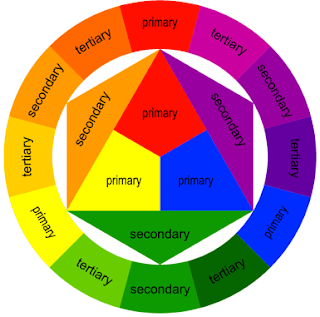An Introduction to Colour Theory
Colour is infinite, colour is always surrounded by
colour, there is a infinite gradient, hues and tones around an isolated colour. Colour never ends, yet we have been taught to distinguish colours as separate hues. How do we know this apple is red?
Three areas to focus around when considering colour,
physical, physiological and psychological. Physical aspects of colour, optics,
refraction… Human interpretation of colour = physiological. Colour is linked to light, our perception of colour is dependent on light,
each singular colour has its own wavelength. Certain wavelengths we perceive as
the same colour because our eye sight is limited. Light is made up of all the possible colours we can see
vibrating at different wavelengths. The way we perceive colour is through reflection. Absorption is important in print, when someone views work in a different colour light it will affect the colour of the print, therefore it is important to know about and take into consideration. The eye contains two receptors: rods and cones:
- Rods see black white and grey, light and dark, tonal values ie shade
- Cones are communicating colour to your brain
Three types of cones:
1 is sensitive to red-orange light
2 is sensitive to green light
3 is sensitive to blue-violet light
The only colours that we really see is red green and blue. When a single cone Is simulated, the brain perceives the
corresponding colour, but two cones stimulated so combination colours can be
perceived, such as yellow. Suggesting that yellow doesn’t really exist.
Primary secondary and tertiary colour wheel:
Mixing complimentary colours gives a neutral colure as
when they’re mixed they cancel each other out. The neutral is another form of tertiary colour.
 |
| Neutral Colour Wheel |
Colour Modes
RGB vs CYMK
RGB – SCREEN
CYMK – PRINT
Chromatic values- Hue, Tone and Saturation
Hue – initial response to a colour e.g. a range of colour that
sits within the violet, green or blue spectrum
Luminance, how bright something is, how much of the light
reflects (shade)
Tint- adding more or less white to a colour.
Saturation – the amount of colour we can see and how pure
it is.
Colour matching systems – Pantone


No comments:
Post a Comment